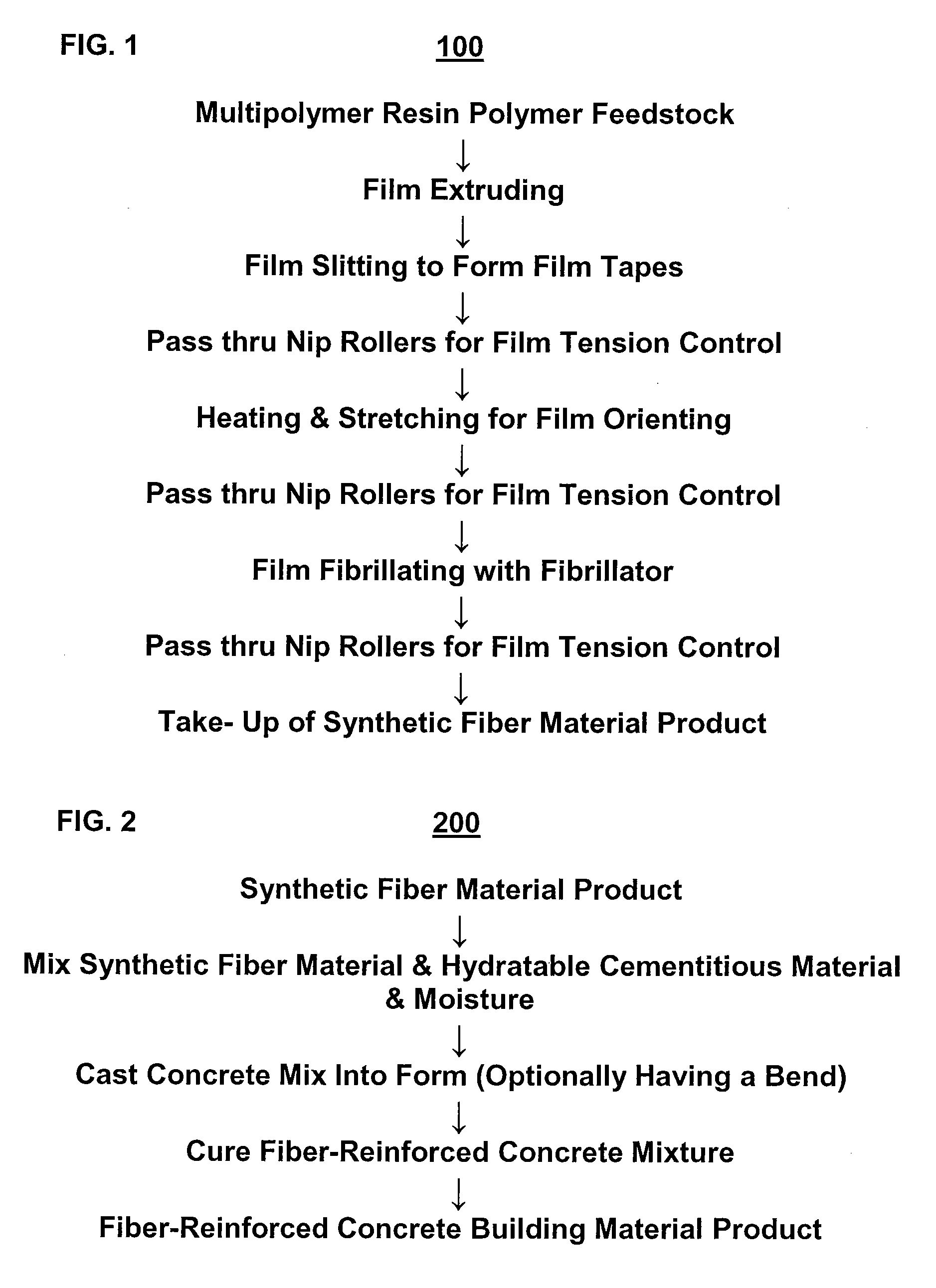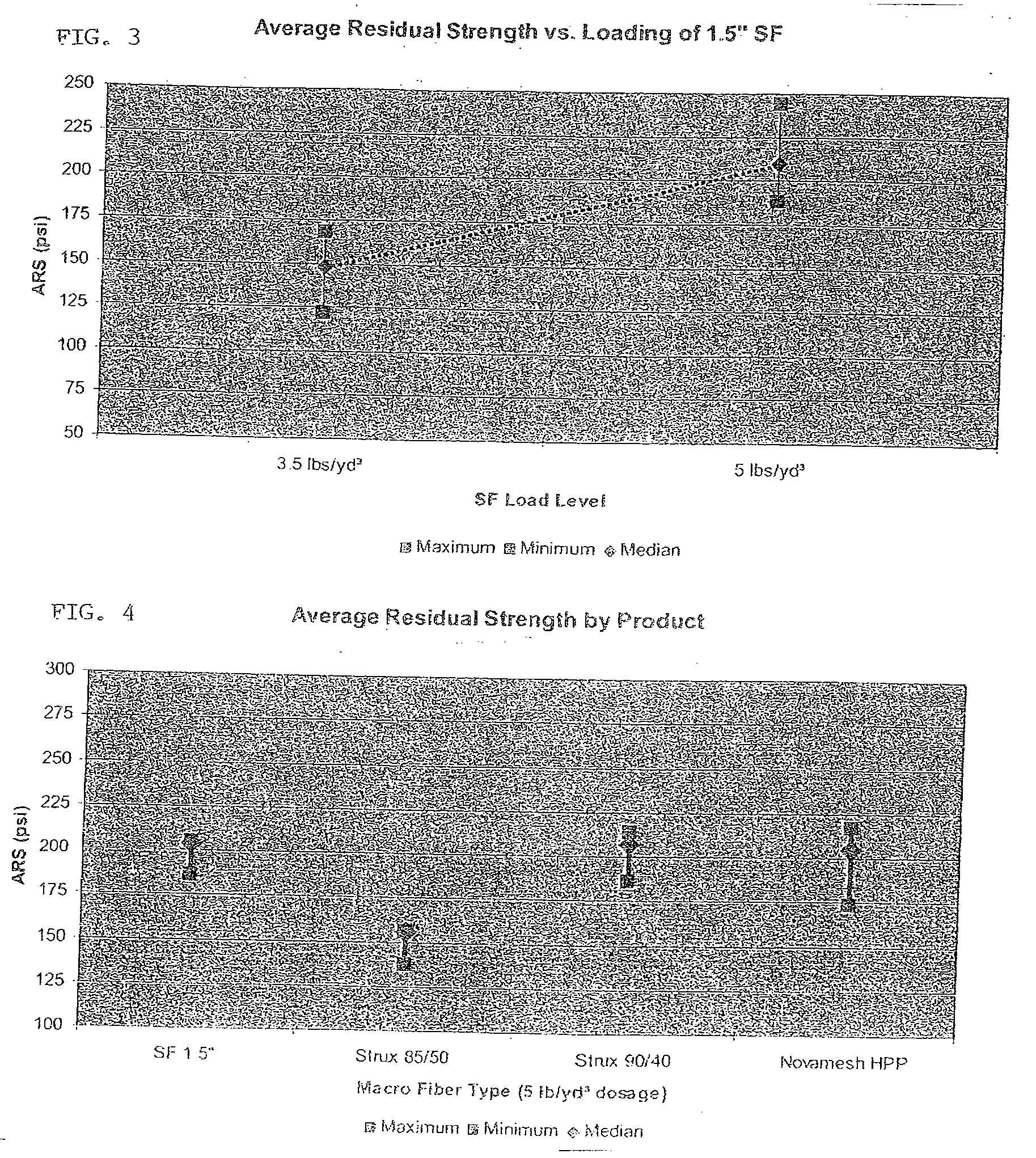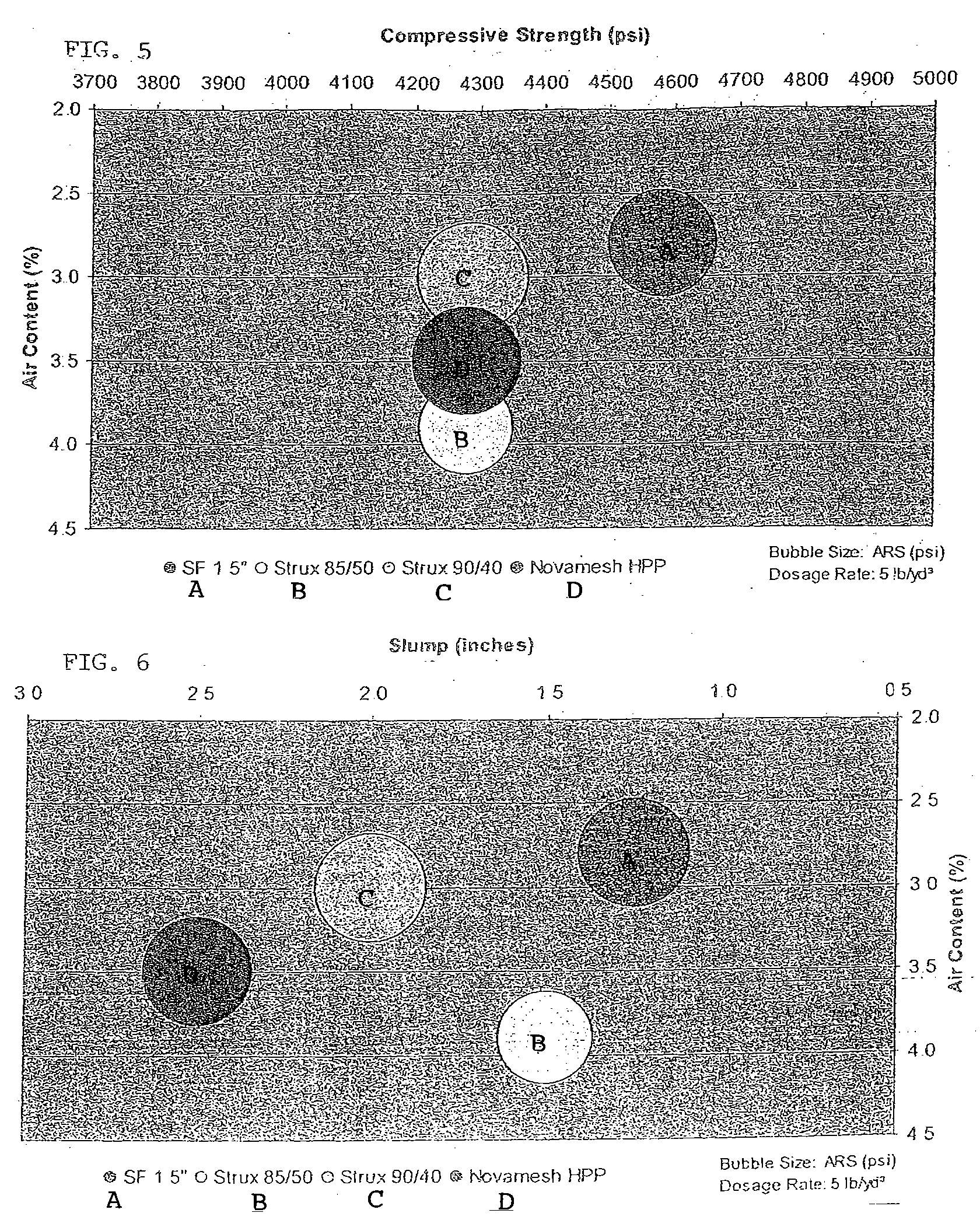Profiled Structural Concrete Fiber Material And Building Products Including Same, And Methods
a technology of structural concrete and fiber material, applied in the field of synthetic reinforcement fiber material, can solve the problems of micro cracks, unsightly micro cracks, and the matrix of the construction cannot withstand structural stress, and achieve the effects of improving conformability, good finishability, and strength
- Summary
- Abstract
- Description
- Claims
- Application Information
AI Technical Summary
Benefits of technology
Problems solved by technology
Method used
Image
Examples
example 1
[0032] A synthetic fiber material (designated “SF” for purposes of this example) representing an embodiment of the present invention was prepared and its average residual strength, compressive strength and slump properties were evaluated as compared to several commercial reinforcing fiber products.
[0033] To prepare samples of the synthetic fiber material “SF”, a polypropylene / polyethylene resin blend was film extruded, uniaxially oriented, fibrillated, and cut to discrete length. The fibrillation process included use of mechanical fibrillation means having the general layout of the above-mentioned U.S. patents pertaining to mechanical fibrillation systems, with the adaptation / modification including the use of a pin spacing of ≧10 pins / cm, a pin density of ≧5.5 pins per square cm, and a pin rate of ≧40 percent, providing fibrous lace-like product having at least 5% fibrillation per square inch.
[0034]FIG. 3 shows the average residual strength in psi (ARS) at two different loading (d...
PUM
| Property | Measurement | Unit |
|---|---|---|
| Fraction | aaaaa | aaaaa |
| Fraction | aaaaa | aaaaa |
| Fraction | aaaaa | aaaaa |
Abstract
Description
Claims
Application Information
 Login to View More
Login to View More - R&D
- Intellectual Property
- Life Sciences
- Materials
- Tech Scout
- Unparalleled Data Quality
- Higher Quality Content
- 60% Fewer Hallucinations
Browse by: Latest US Patents, China's latest patents, Technical Efficacy Thesaurus, Application Domain, Technology Topic, Popular Technical Reports.
© 2025 PatSnap. All rights reserved.Legal|Privacy policy|Modern Slavery Act Transparency Statement|Sitemap|About US| Contact US: help@patsnap.com



